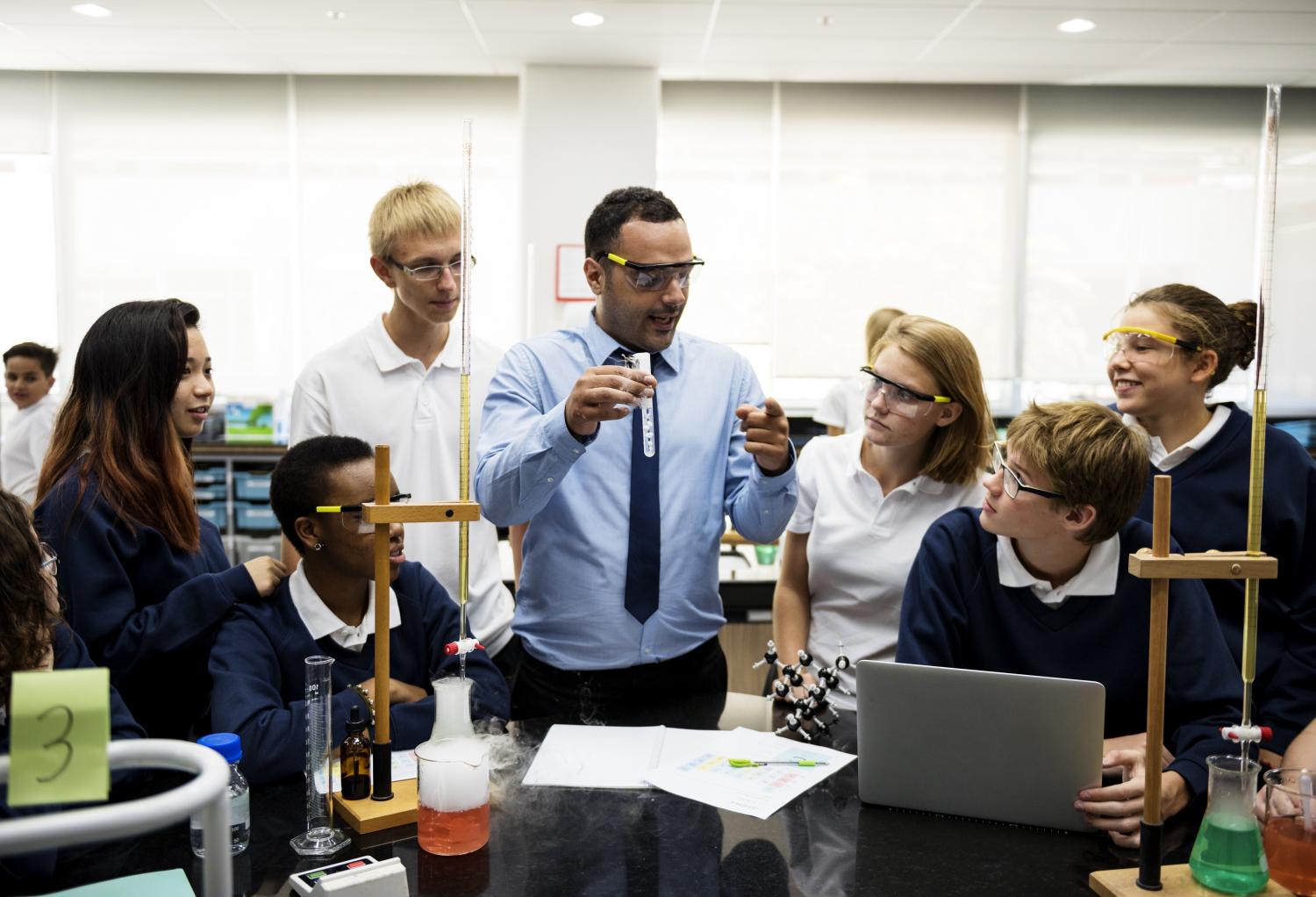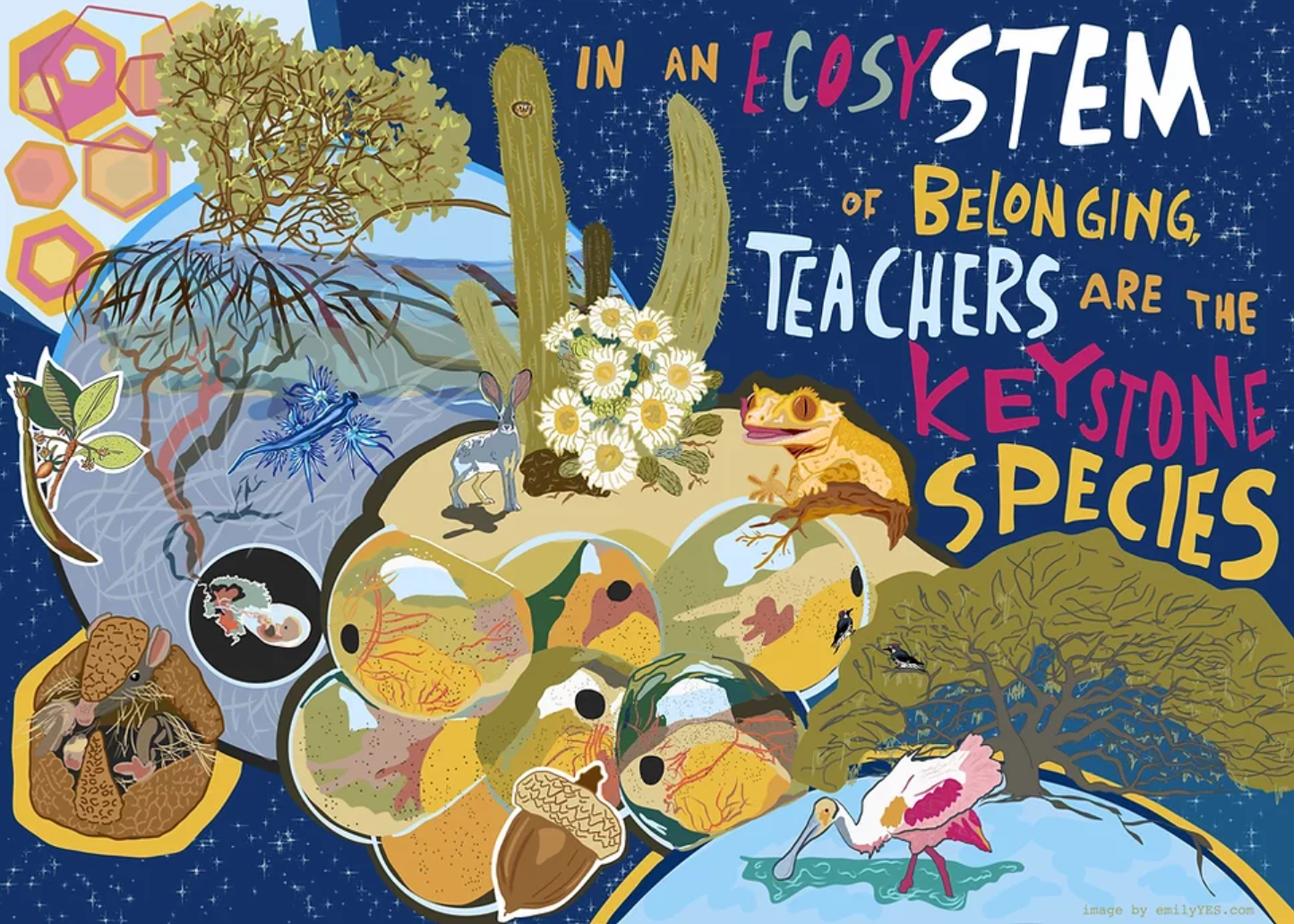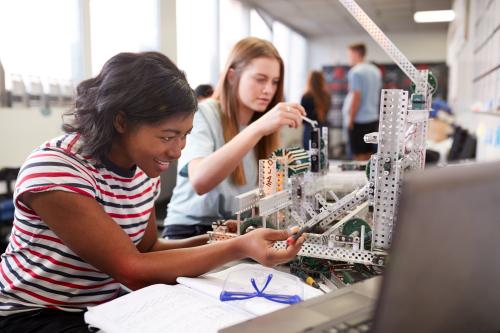Whether it’s the pandemic, climate change, food shortages, or economic inequality, almost all of the world’s most pressing problems would benefit from STEM-based solutions. Fourteen of the 16 fastest-growing “industries of the future” are STEM industries, and all of the top 25 degrees by pay and demand are in the STEM subjects. By 2025, there will be 3.5 million STEM jobs open in the United States alone.
We could fill those jobs with top talent, but right now, only a tiny fraction of our nation’s population has the necessary STEM skills, knowledge, and agency. STEM inequities disproportionately affect young people of color, rural kids, kids in poverty, and girls—and they are magnified for young people who carry more than one of those identities. From our own experience and from reams of data coming out of labs like Raj Chetty’s at Harvard, we know that we are missing out on breakthrough innovations from young people who are missing out on the chance to do the kind of STEM that makes those breakthroughs possible.
When schools are the engines of social mobility, it is—more than anything else—because of what teachers do in the classroom. Yet even before the pandemic, schools were struggling to recruit and retain STEM teachers, a challenge that will only magnify if the Great Resignation reaches the schoolhouse.
A moonshot call to rise to the challenge
Inspired by President Obama and his call to action in the 2011 State of the Union for 100,000 new and excellent STEM teachers, 100Kin10—a nonprofit organization that I founded and continue to lead—was born. Twenty-eight pioneering organizations from myriad sectors stepped up to make commitments to action that first year.
Ten years later, 100Kin10 is now a nationwide network coordinating the efforts of more than 300 outstanding organizations, and together we surpassed the original goal, preparing more than 108,000 STEM teachers over the last decade. According to an independent evaluation by Bellwether Education Partners, “Ten years after 100Kin10 first set out to answer President Obama’s call, education leaders describe a STEM education field that has progressed in significant ways.”
How? Our vast network co-created a map of the challenge space so that we could collectively see all the impediments to getting and keeping great STEM teachers in our schools. This process elevated bright spots and unearthed who was working on what—making collaboration easier and identifying areas of strength and deserts in need of greater investment. Finally, we developed tools that allowed those pioneers to learn from each other, adopt strong approaches to their contexts, and mutually develop solutions to shared problems, narrowing in on our role as mobilizers and removers of barriers to collaboration.
Harnessing collective efforts to solve the most challenging problems
Two key innovations drawn out in the Bellwether report bear mentioning. First, 100Kin10 preparation programs improved how they recruited highly qualified STEM teacher candidates. In 2011-12, each organization preparing STEM teachers prepared an average of 172 teachers. By 2020-21, the average had grown to 294. In the final two years of the effort, both of them in the pandemic, 100Kin10 partners prepared more teachers than they had in any other two-year period. And this came against a backdrop of the historic decline in total enrollment nationwide in teacher preparation programs since 2010.
As an example of how this was accomplished, a 100Kin10 project team developed an initiative to recruit more university STEM majors into teaching. The resulting Get the Facts Out (GFO) recruitment campaign provided informational materials to professors and undergraduates in STEM majors designed to dispel common negative myths about teaching. In 2021 alone, GFO reported reaching over 5,000 faculty and students at roughly 1,000 institutions across the country. Preliminary data indicate that the GFO approach has had a positive impact on university students who were more likely to report an interest in teaching and that their professors value and encourage teaching, compared against the period preceding GFO.
Second, 100Kin10 partners increased their emphasis on preparing and supporting elementary teachers with STEM skills, particularly in foundational math. Data are clear that the “spark” in math and science tends to come early, and that after grade 5, it is very difficult to recoup losses in math and science learning. Joyful and authentic early math was one of the high-leverage catalysts that we identified early in our strategy mapping; in 2019, we mobilized the network to address it. In just the two years since, 55% of partners reported that they increased their focus on this catalytic area. For example, the Intrepid Sea, Air, and Space Museum in New York City developed Code Together, a program where teachers and students learn basic coding together and explore ways to integrate computer science concepts into other subject areas. This shared learning model is intentionally designed to boost the confidence of teachers who feel unprepared or anxious about teaching STEM subjects—a common mindset among elementary teachers.
Since we launched, nearly 3,000 leaders have contributed to the work of the 100Kin10 network. All this led to Bellwether’s conclusion: “100Kin10’s success in simplifying a vastly complex problem and galvanizing action across the country accelerated positive shifts in the STEM education field” led to “more teachers and students hav[ing] access to meaningful, authentic, and rigorous STEM learning via 100Kin10 partners.”
Looking forward: Prioritizing inclusion and students’ experiences
We are at an inflection point, celebrating the end of our first 10-year run and looking ahead to what must come next. Much work is still to be done. Decades of racism and exclusion have left too many of our children—especially our Black, Latino, and Native American young people—from fully participating in the STEM fields.
In the fall of 2021, knowing we were near to reaching our first 100Kin10 goal, we launched the unCommission, a massive experience of storytelling and listening in which 600 young people—80% of whom were people of color—shared stories about experiences in STEM while in K-12. We heard about great hands-on science experiments (mummifying a chicken that the kids dubbed “KFC”) and curricula that didn’t feel at all relevant. But a deep vein that ran through the stories was the instrumental role that teachers played in creating—or failing to create—environments in which students believed they belonged and could succeed.
One student shared: “And then, the only science class I’ve ever taken that I really enjoyed would be chemistry in high school, which I took my sophomore year. And the difference in that class was 100%, the teacher, he was just amazing. Teachers that are passionate about what they do, they truly and clearly care. You know, that makes all the difference. And that makes me want to learn.”
Another told us: “Having a teacher who finally took the time to sit me down and make me address my gaps and knowledge has set me up for life. I am so lucky to have had someone who cared enough to intervene instead of letting me slowly drown and fall behind.”
As an artist working on the unCommission summed it up: “In an ecosystem of belonging, teachers are the keystone species. The keystone species is the species that keep an entire ecosystem in balance. Amidst the turmoil and uncertainty that is growing up, teachers are uniquely positioned to create that sense of belonging and connection for their students.”
And so, building on the success of the first 10 years, 100Kin10 is preparing to follow the voices of young people toward a new mountaintop. Our goal is not only preparing and retaining STEM teachers, but it is supporting them to create classrooms of belonging for their students—particularly for students of color. When our teachers are supported to create vibrant STEM classrooms of learning and belonging, the sky’s the limit on what challenges our young people will solve.
The Brookings Institution is committed to quality, independence, and impact.
We are supported by a diverse array of funders. In line with our values and policies, each Brookings publication represents the sole views of its author(s).








